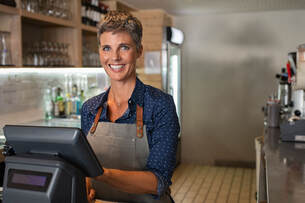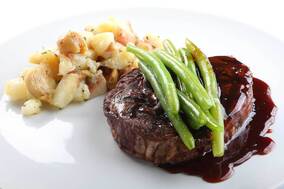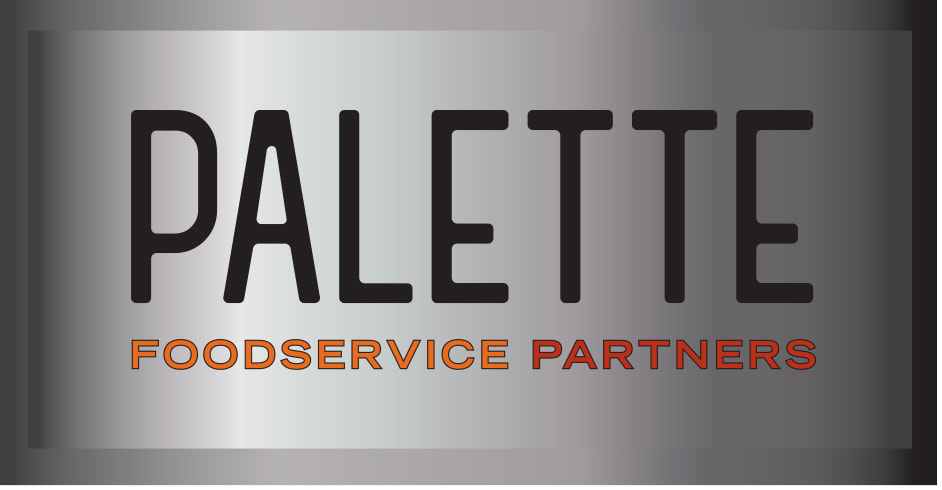 At a time when restaurants are trying to differentiate themselves through their loyalty programs and how guests are able to earn rewards through them, it only makes sense that this trend would extend to restaurant apps themselves. A number of major brands are using their apps as vehicles to demonstrate value right now, aiming to entice guests to download the app to access special deals or exclusive service. That includes the ability to order ahead, skip the line while either picking food up or dining in, and access digital-only offers. Many more brands are hinting at their own app developments to come, so watch for how these enhancements begin to change guest expectations for apps and in-app offers.  Generative artificial intelligence (AI) is attracting a lot of attention right now for its ability to create brand-new content – be it audio, video or text. Most recently, ChatGPT, text-based generative AI launched late last year and available for free to the public, has garnered news headlines for its ability to write poems in the style of Shakespeare, publish articles, summarize books, create business plans and even pass medical exams. (DALL-E 2 is the equivalent of ChatGPT for image generation – helping restaurant operators visualize the prospective menu items in their heads.) ChatGPT can deliver curated work, all while sounding conversational. There are huge opportunities for it in businesses – but also risks to bear in mind at this early stage. The conversational tone of ChatGPT’s results make it sound confident and trustworthy, but it requires human intervention to ensure accuracy (and no intellectual property should be shared with it). However, it can be a helpful tool to get the ball rolling when you’re drafting job descriptions, vendor emails, marketing plans or social media posts. Generative AI tools from companies including Google and Meta are pushing the evolution of this technology too and are making it possible for restaurants to quickly generate ideas for audio, video or text content that can be used to run their business and market to guests more effectively.  In the past few years, your restaurant has likely expanded the number of sales channels it offers to guests. Many full-service restaurants may have permanently ramped up their delivery and curbside pickup businesses, while quick-service restaurants may have made significant investment in their drive-thru business. But regardless of restaurant category, being able to deliver a consistent brand experience in every available ordering channel is critical – particularly if one channel seems to be getting more focus/investment/attention from guests than others. It starts by having a strong central nervous system in the form of a POS that streamlines all of these different business strands, makes it easy for staff and guests to process orders through them, and has functionality that allows the business to track and prioritize orders and other information in real time. Still, a recent report from Restaurant Technology News says many restaurant businesses are holding off on implementing such an all-in-one tech solution, largely because it might be too difficult for staff to learn in the midst of handling daily tasks and serving guests. However, it says, “utilizing these solutions can eliminate vendor fatigue for hospitality staff and free them up for higher-level activities…These solutions are giving them more time to prioritize, execute tasks, and delight guests, which ultimately increases efficiency and revenue for the business.”  While the outlook for restaurant labor appears to be improving this year, hiring and retaining staff continues to be a perennial challenge for operators. Recent research from the National Restaurant Association found that 89 percent of operators said labor costs are a significant challenge for them, while 62 percent don’t have enough employees to support existing demand. One way operators can appeal to potential staff – and keep them once they are on board – is by using tech software to provide greater flexibility in how and when people get paid. That could mean giving employees the option of direct deposit, a payment card for those who don’t have a bank account, or (especially) providing on-demand payment. According to research from the Access Group, companies that provide the option of on-demand pay see up to a 25 percent reduction in staff turnover, as well as 20 percent more shifts worked by users of the service.  Food costs are a moving target. Inflation and supply shortages aside, sometimes food distributors of all sizes simply make errors. But in a business that operates on slim margins, even small errors can add up. Your restaurant management software should be able to help ensure you don’t accidentally overlook an overcharge buried in a P&L statement listing hundreds of items. Instead of having to rely on cross-referencing with past purchases, your software should be able to highlight items that don’t seem right – whether due to a price change or to vendor error – and allow you to set a price limit on ingredients you purchase so you don’t inadvertently overpay.  Restaurant waste equals money lost. Artificial intelligence is helping operators increase the rigor of their waste management practices at a time when managing aspects of a restaurant operation is critical to staying in business. Restaurant Business reported recently that Taco Bell and KFC had adopted Yum Brands’ “Recommended Ordering”, a machine learning program that predicts and suggests recommended quantities of product to order each week. The objective of the tool is to reduce food waste and lower cost, but it also offers the potential benefit of lightening the load for managers tasked with making accurate orders each week.  You may already be introducing new tech tools in your kitchen that can increase its connectivity – such as temperature sensors that can alert a manager to a malfunctioning cooler or systems that can process multiple order streams and churn out directions to help kitchen staff prepare orders at the appropriate time. Going forward, this kind of connectivity with external hardware systems may even help restaurants bring the dishes of top chefs into their businesses without the trained staff generally required to prepare them. One new company called CloudChef aims to be “Spotify for food” with the help of a cloud software platform that uses sensors and cameras to capture and share the process of a chef working through a recipe. All cooking decisions are done by the software, while human staff are still needed to portion and plate food, as well as to move it around the kitchen during preparation. The company’s only U.S.-based, company-owned kitchen so far is in Palo Alto, Calif. (meals are available through third-party services like DoorDash), but it offers a window into how restaurants and labor needs may evolve in coming years.  There is little doubt that automation and artificial intelligence-powered solutions are changing the game in restaurants and dangling carrots like speed, scalability, profitability and freedom from labor woes. (Take Sweetgreen, which is planning to test fully automated restaurants next year.) It’s also true that for every successful test of new restaurant tech, even at well-resourced global brands, there is an unsuccessful one that restaurant leaders decide to sideline. In a recent report from Restaurant Business about the ups and downs of automation, Technomic’s Rich Shank advises planning for contingencies when implementing new tech, as well as “being clear-eyed about the inevitability that these systems will fail.” As important as new tech can be for a business, so are responsive, effective tech support and the availability of low-tech capabilities to complete tasks when problems arise. |
Subscribe to our newsletterArchives
July 2024
Categories
All
|



 RSS Feed
RSS Feed